Welcome to “The Journey”, a newsletter from my little corner of the internet!
In this issue, I’m continuing to discuss the topic of “could you move from North America to Europe”, first raised a few months ago in a thought-provoking post by Gregory Garretson. The question this week is, “Are you adequately familiar with the country you are moving to?”
Life at Large (This section has been temporarily commandeered to discuss the query “could you move from North America to Europe?”)
“Are you adequately familiar with the country you are moving to?”
I’m going to say right up front, there is whole lot of “do as I say, don’t do as I did” coming up here!
Michal and I had visited Portugal one time, spending just three weeks in the country, and only four days in Porto before deciding Porto would be our new home.
The haste of that decision does not mean we completely skipped the research, but it does suggest we relied heavily on what we know about ourselves–on our own strengths, to have the confidence to make the move. In positive psychology, this is called a strengths-based approach—relying on traits like curiosity, resilience, and optimism to guide decisions and navigate the unknown.
We approached the move not as a once-in-a-lifetime perfect decision, but more like a growth experiment.
To reduce surprises, we dug into the practical stuff: immigration, taxes, healthcare. We listened to stories from other immigrants to learn what cultural differences stood out. We followed Portuguese news, tracked the weather in Porto for a year, and (sort of) started learning the language.
Although the temperatures and average rainfall in Porto looked quite manageable from afar, we did notice people regularly commented about cold, damp apartments, mould, and even active leaks in their apartments. We suspected things might be a bit different than the rain in Vancouver, after all.
During our first winter, we learned exactly how different, as we also found ourselves in a cold, damp, drafty apartment, with water leaks coming from three separate sources. That first winter tested our resilience. With the help of the bombeiros (firefighters) and a responsive landlady, we worked through each new incident as it splashed into our lives.
Studying the annual rainfall didn’t fully prepare us for that first winter, but our individual strengths of humour, hope, and optimism got us through it, regardless.
Psychologists Martin Seligman and Christopher Peterson, credited with founding the field of positive psychology, also founded the concept of signature strengths.
Signature strengths are the positive parts of your personality that impact how you think, feel and behave.
There are 24 of them, and there is a survey you can take to discover your own signature strengths.
I’ll share mine, because they explain quite a lot about how I react to the choices and challenges life throws at me:

And now my less dominant strengths:
When I reflect on these, I think my lesser senses of judgement, prudence, and self-regulation got me to Portugal, and my sense of humour, hope, and curiosity kept me here!
I’m joking, of course, but I do see very real ways these strengths have surfaced during this move, such as the leaky apartment saga I mentioned above.
In summary, I would say more knowledge about the country you plan to move to is better. The fewer “big” surprises waiting for you the better. It will be easier to adapt to your new home if you know, at least at a basic level, what to expect about the way of life, the weather, the food, etc. But your character will be just as important as you respond to new experiences, and unexpected conditions. You might be more ready for the challenge than you think.
In the next edition of The Journey, we will explore the question: “Do you see a realistic path toward long-term residency?”
Previous post | Next post | Start at the beginning
Projects and Events
The Cluster Photography and Print Fair has wrapped up–what an experience that was! On one hand, it was a bit chaotic, and I rarely knew what to expect, on the other hand, I can’t believe how they pulled all that chaos together into what turned out to be a great exhibition.
The venue was a bit rough, a reclaimed industrial space. Michal and I joked about feeling right at home in there, as the pipes running across the ceilings leaked at regular intervals, reminding us of our rather leaky apartment in Porto!
There were also a few unexpected changes to the space I was expecting for my little corner of the exhibit–rather than white wooden panels, I had a strip of back brick wall to use. It was different than the plan I had going in, but we adjusted.
I’m very grateful to my cousin-in-law, Dave who framed prints for me the night before, to Nora who ran to the local hardware store with me to find a solution for hanging the images on brick, rather than wood, and Michal who used his keen eye for visually appealing presentations who helped me adjust to being assigned to a different space than expected to hang my images.

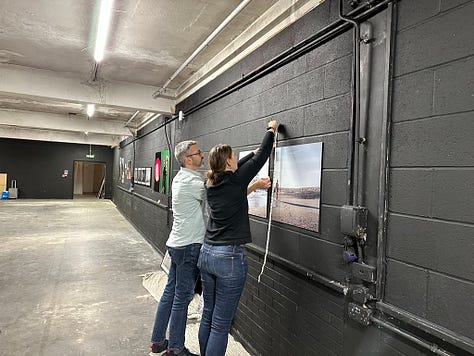
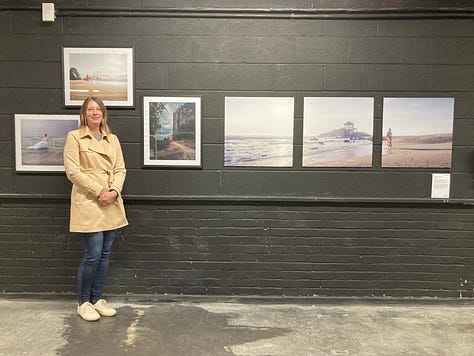
When we returned to the venue that evening for the opening night, I was shocked to see a queue of people extending around the block to come see the show. I couldn’t believe the crowd, it was quite a moving experience!
In short, it was a great experience! Considering the cost and chaos of participating, I don’t think I would do it again, but it’s certainly a memory I will hold close. I can now say I got to show my photography in London, something I would have never imaged possible!
While we were in London, we also released a new episode of the Relocurious Podcast. In this episode, Georgeanne and Anne share their story of moving from Canada to the UK, with no fixed final “plan”. They are, in Georganne’s words, “building the plane as they fly,”. Have a listen if you are curious about their story!
We also released a post about those times when multiple life transitions occur at once, like retirement and a move to a new country. It can be a lot to navigate all at once, but there are some tools to help you persevere through the challenges. You can read about that here:
Writing
With everything that’s been going on over the last few weeks, I haven’t added many words to Dad’s story. I have done a bit of research, though, and that’s been interesting. I’m currently working on the section about when Dad lived in the Okanagan, in British Columbia, during the early 1940s. The family moved away when he was starting grade two, so he was quite young. His memories of that time are clear in some ways, but specific details can be a bit hazy.
Every now and then, he mentions something I think I can dig into a bit more—like a man named McCrae, who the family rented a home from while my grandfather managed McCrae’s orchard. He was a retired officer from the British Army who preferred to be addressed by his rank (which Dad can’t remember, so do I include that quirk, or leave it out if I don’t have ALL the information?), even in the orchard. He was an engineer by trade and had been part of the team that designed the canal irrigation system that watered the orchards in the otherwise semi-arid South Okanagan.
I haven’t been able to find anything specific about the officer, but I did come across an interesting video from the Oliver & District Heritage Society about how the canal system was built. It’s not particularly useful in understanding five-year-old Walter’s (my dad’s) experience of living on an orchard, but it helps me get a clearer picture of the times, the landscape, and the priorities of the community as I write his story.
There are many interesting details that come up in stories, some with explanations, some without. As the story is a telling of Dad’s memories, I’m broadly ok with writing the memories as he tells them, but sometimes, particularly when they involve other people, or specific events, I like to see if I can find mention of them in the public domain to either verify the dates, etc, or to help me see a more clear picture in my mind as I write about it.
It’s a slow process, but I expect when I get to my parents’ home in early May, I’ll have both the time, and the access to Dad, to really make some headway on this project.
Photography
Between sessions at the exhibition last week in London, I got out with family and friends for a few walks around the city. Here are a few images from those occasions:
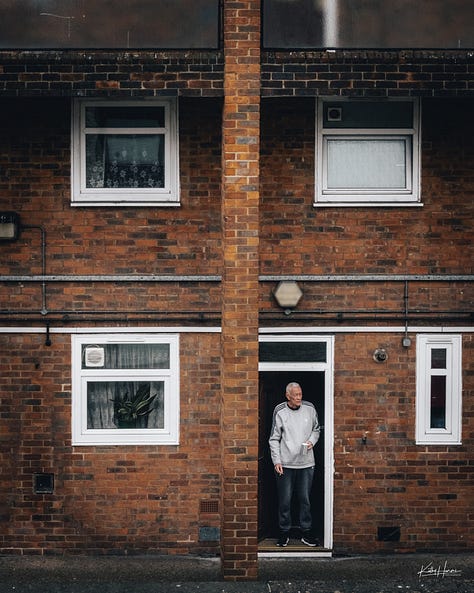
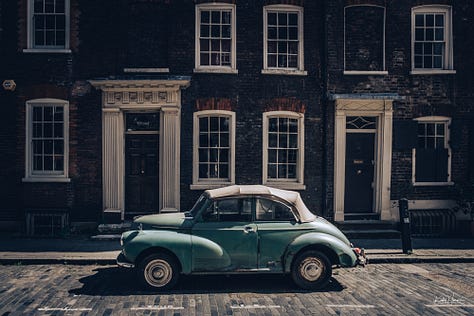
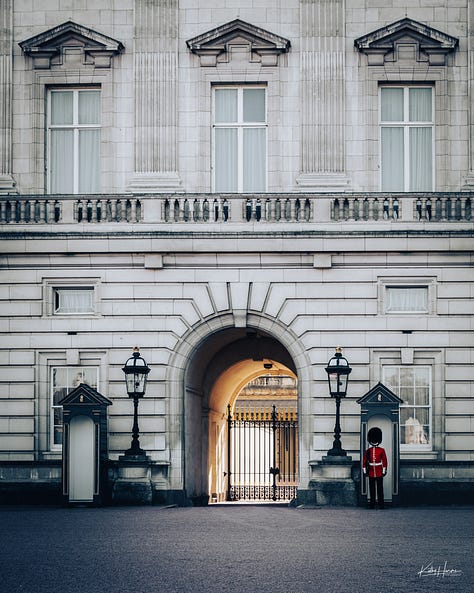

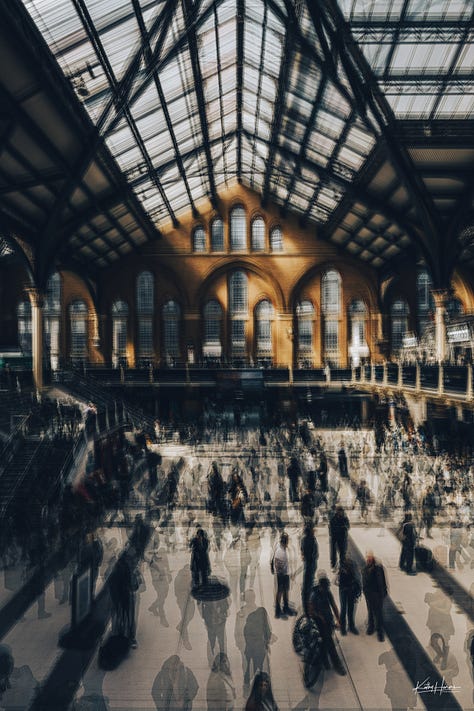
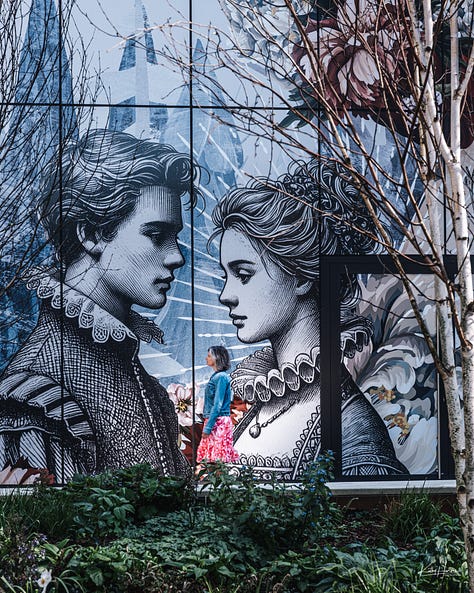
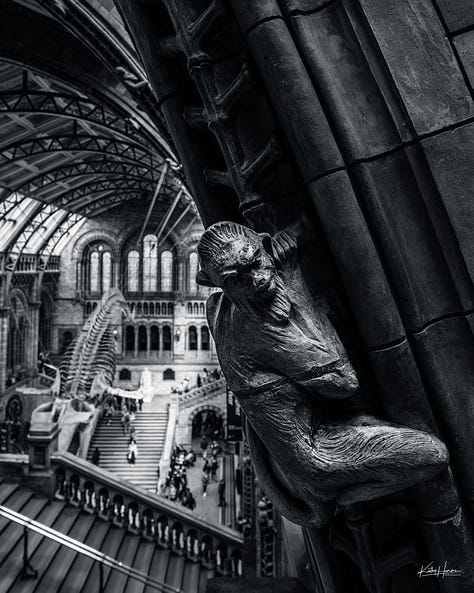

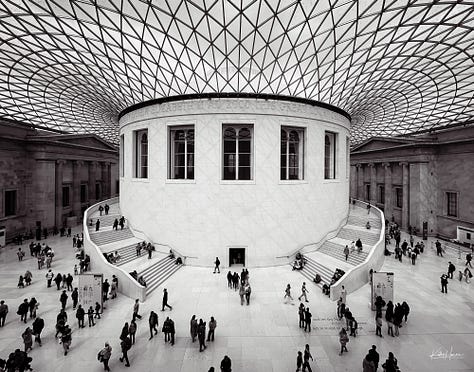
When we returned home to Porto, my cousin and her husband joined us. My cousin also enjoys photography, so we had a few opportunities to take our cameras for a jaunt around Porto and nearby towns, as well.
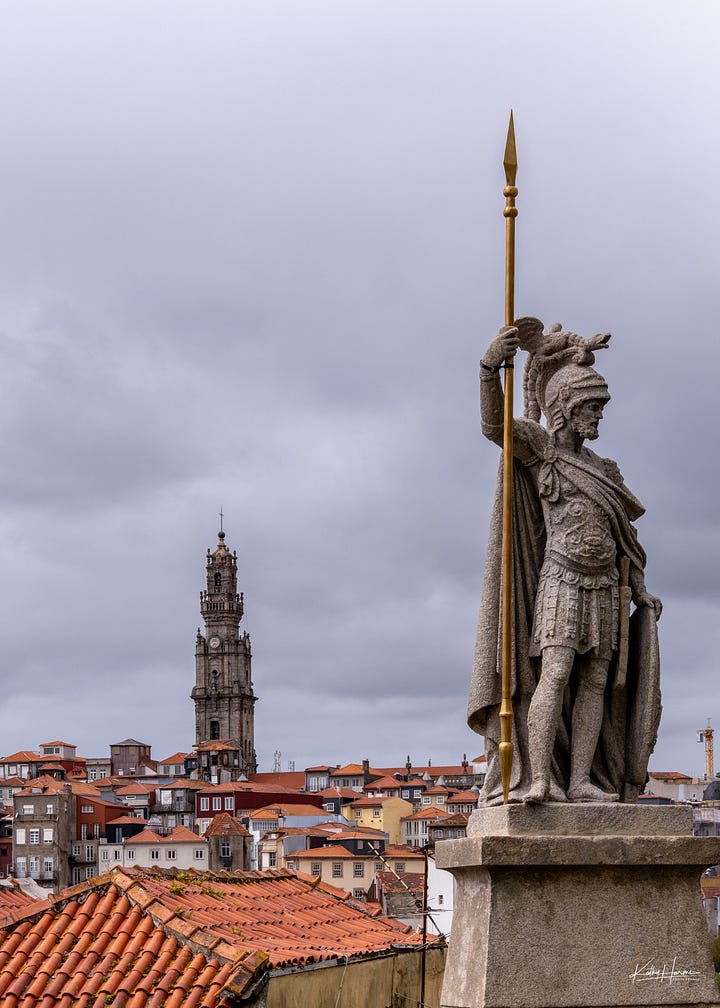
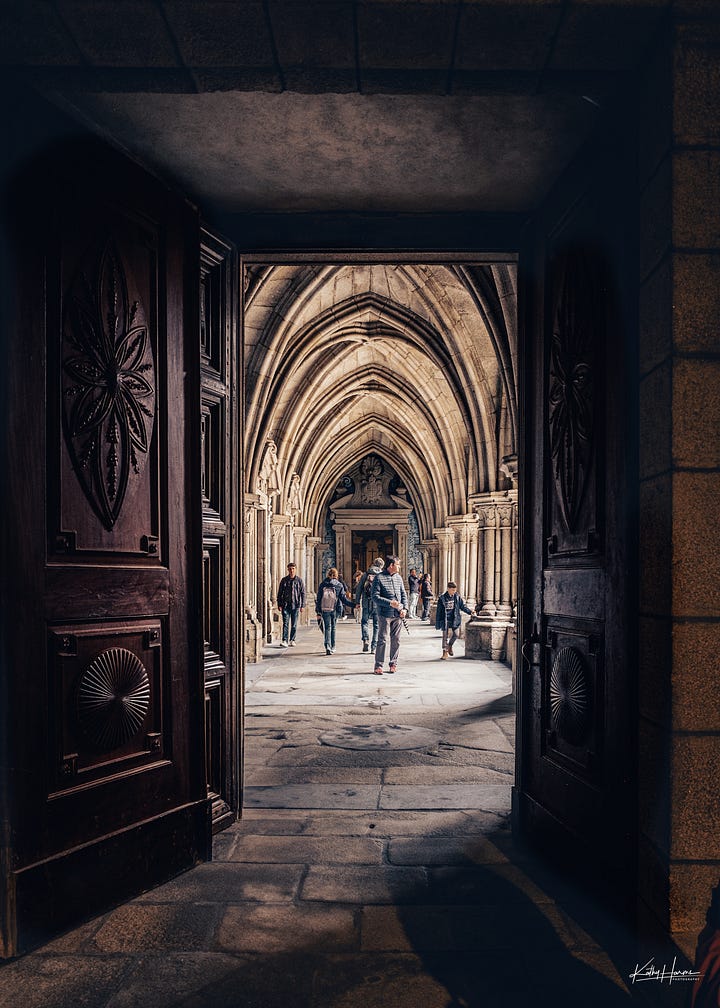
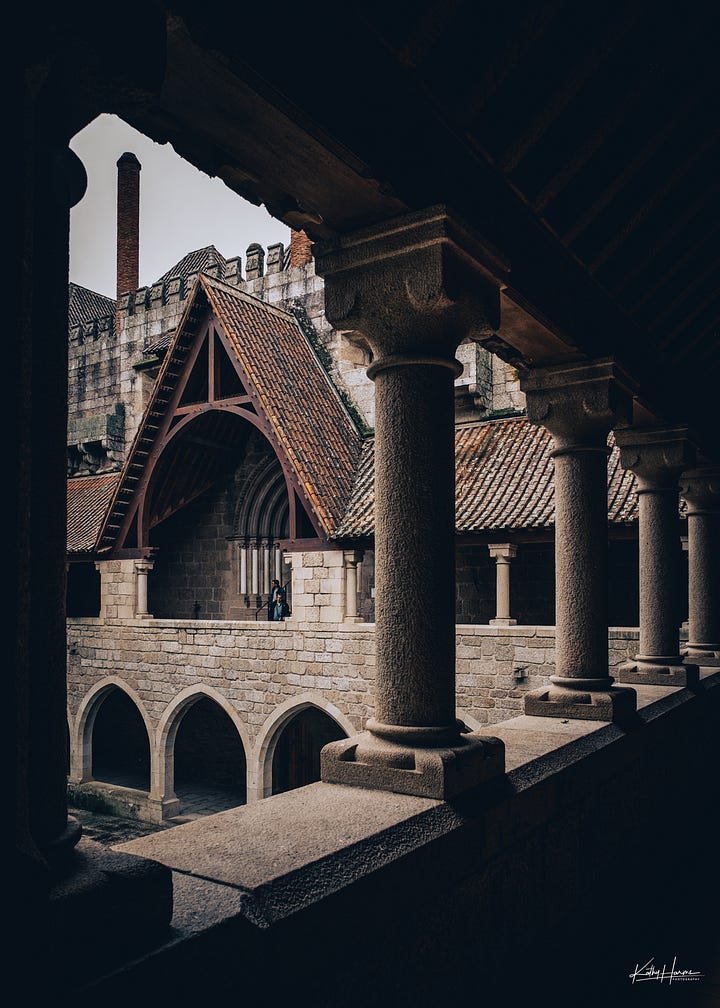
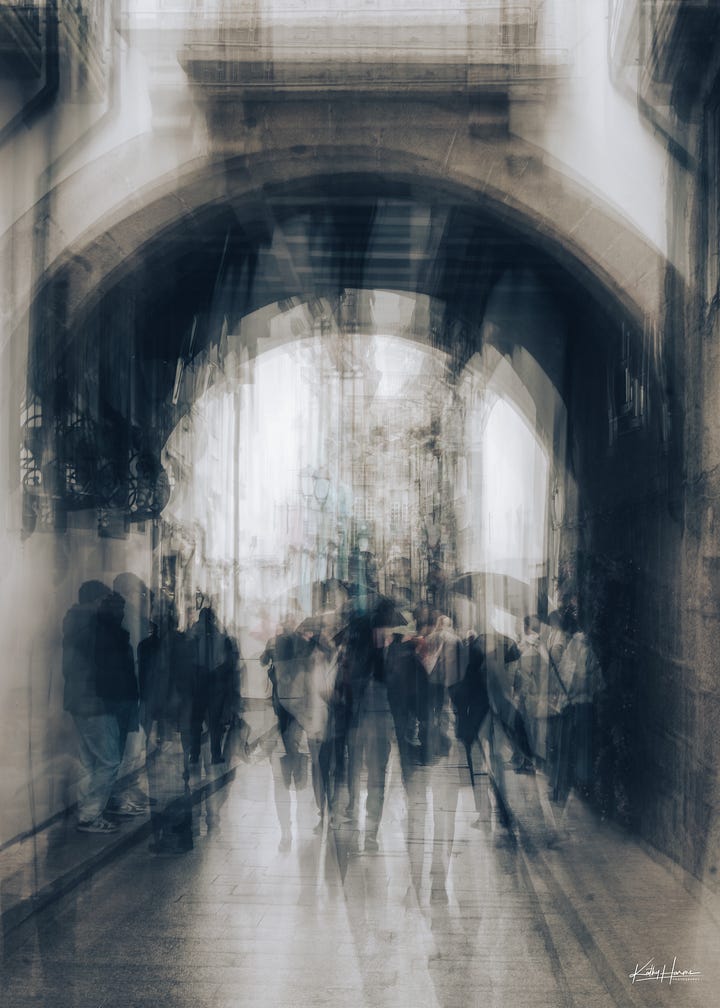
Last Thoughts
Thank you for following along as I share odds and ends from life and creative pursuits, and to those of you who opted in for a paid subscription, THANK YOU! There is a small token of my gratitude on its way to you in the mail for new paid subscribers.
There is also a little “bonus” at the end of this newsletter for paid subscribers. This week it’s a short video sharing some “behind the scenes” experiences from the photography exhibition in London last week!
As always, I love hearing from you - your comments, questions, suggestions, or just a quick hello. They are all very welcome!
Até à próxima! (Until next time!)
Kathy
Keep reading with a 7-day free trial
Subscribe to The Journey to keep reading this post and get 7 days of free access to the full post archives.






